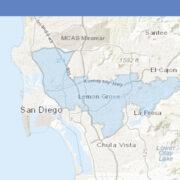IT IS identified in every contingency plan that disasters, terrorism and war, civil disturbances can all precipitate evacuation.
Ironically, the imminent danger looming in the Korean peninsula has not yet prompted the Philippine government to evacuate at least 40,000 Filipinos embroiled in the tension.
The situation remains at Alert Level 1 or “heightened alertness,” following North Korea’s declaration of a state of war with South Korea over the weekend.
While the condition remains normal and calm, South Korea vowed strong retaliation to any provocation by North Korea.
Should war arise between North and South Korea, the Department of Foreign Affairs (DFA) assured that the contingency plan is in place for the safety of Pinoys working and living in South Korea.
“We have a contingency plan for the safety of our people there in case they need to return to our country. The Philippine Embassy in Seoul is prepared,” said DFA spokesperson Raul Hernandez.
Part of the evacuation would see the embassy set up temporary shelters in safe and secured locations like Busan, and then arranging flights and ships as available, to take the Filipinos back home. Hernandez added that the DFA is closely monitoring developments in the peninsula with coordination with its South Korean counterpart, and the United States and United Nations.
Meanwhile, Sen. Loren Legarda reminded the Philippine government to “make sure that its contingency plan is workable.”
“We cannot wait for the situation to worsen before the details of our contingency plan are firmed up – from activation of emergency area coordinators, conducting resource inventory, designating holding areas, and identification of safe evacuation routes,” she said in a Philstar.com report.
Although some have described North Korea as all bark and no bite, Legarda stressed that “uncertainties and dangers exist.” “All these could lead to regional instability and erode the progress realized by countries in the region, including the Philippines,” Legarda added.
The greatest challenge in contingency planning may be attaining the crucial support and initiative from its target audience. It requires continuous updating and evaluating, as conditions change. Having it carried out is a much bigger challenge.
Without a contingency plan, people and businesses are left to the mercy of devastation. Should the tension escalate, those situated in the Korean Peninsula will be facing a long-dormant threat, a renewed war that can probably be nuclear.
The DFA advised Pinoys in South Korea to remain vigilant and communicate with their community leaders, who remain in regular contact with regards to the contingency plans.
An emergency plan is not a survival tool, but a means to prepare people for a worst-case scenario. Filipino expatriates should know when it’s time to leave. After all, this is not the first time North Korea showed aggression toward South Korea.
First was the sinking of a 1,200-ton South Korean warship in March 2010. It was later discovered that a torpedo fired by a North Korean submarine caused the incident.
Second was when North Korea fired artillery shells onto South Korea’s Yeonpyeong Island in November 2010. Four people were killed, dozens were injured and houses were set ablaze during the attack. Fortunately, no Filipinos were reportedly killed in both incidents.
Heaven forbid if the third time becomes the charm.
(AJPress)




